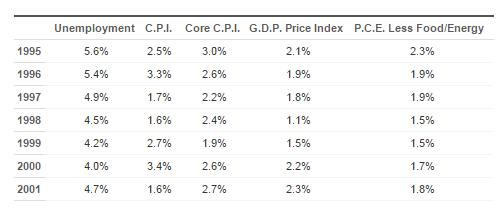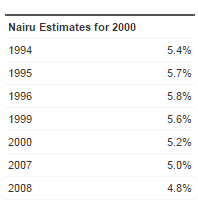Well, this is it. Any day now (possibly within just hours of this posting), the Supreme Court will finally determine the constitutional status of gay marriage nationwide; and in the process, will likely end up overturning the few remaining barriers to a new era of positive freedom for the United States. Though being deliberated on by just nine elderly justices, I’m confident their determination will reflect both the overwhelming tide of public opinion and the true meaning of liberty as intended by the Constitution. It is something that is inevitable; it is something that is unprecedented; and simultaneously, at the same time, it is something that is long, long overdue.
To many, this will be a bitter pill to swallow (surprise!) . I know, because at one point, that would’ve been my situation. Social conservatism is a very powerful force in this country. That’s not at all inherently a bad thing (I’d argue much of that sentiment is actually a force for much good), and many well-meaning, good people, people whom I love very much, hold very traditional, socially conservative values. And they have a right to do so. But the ideology and core beliefs that they espouse has a tendency (sometimes, but not always) to overrule independent thinking, or the ability to think of different possibilities and to adapt accordingly (although to be fair, that’s generally true for all ideologies). The value system that structures “traditionalists'” world, in reaction to a non-traditional concept, tells them no, or that it’s wrong, and that no other reality can or ever should exist. Whether it be for moral or religious or status quo reasons, preservation of “tradition” (as constructed) is key. Anything else is a threat, and is labeled as wrong and undesirable accordingly.
I deeply understand all of this; again, like I said, I was at that point once. But I strongly challenge all those who still hold “traditional” views to seriously rethink their positions; if not on every social issue (which is understandable), then at the very least on this issue of gay marriage. Because the arguments for gay marriage are simply overwhelming on all angles – from a societal, economic, and moral standpoint. Now, it should go without saying I won’t be able to address anywhere near the full amount of arguments both sides pose (nor do I really want to), and I’m certainly not an expert on anything. But here are a few brief things that I think people who oppose gay marriage should consider (and yes, full disclosure, my opinion is injected into many of these arguments):
1) First and foremost, having “unconventional” attractions is simply NOT a choice. Too many people, too many studies, too many instances in the animal kingdom confirm this. And I have no idea why someone would EVER choose (given rampant societal discrimination) to have “unconventional” attractions. It’s a perfectly natural thing that just is. If this cannot be swallowed, spend some time on it (especially if you want to even begin considering gay marriage pros/cons). If second-hand sources don’t suit you, then please, go out and meet people who have these “unconventional” attractions (there are many such people – more than you’d think – and whether they identify as LGBTQ or not). Your perspective will be transformed; perhaps not instantly, but inevitably, it will be.
2) America is (quite simply) built for freedom (including religious) and the pursuit of happiness. If you object to gay marriage, you can freely say so, refuse to endorse it, say you think it is wrong, etc. Those are all legitimate beliefs you are entitled to personally have. But America’s promise is to allow all people to live their lives as they see fit to pursue happiness (as long as they are not harming anyone else). If you object on religious grounds, that’s fine; but America is not about forcing people (via the government, of all institutions) to be confined to your beliefs, or for you to be forced to follow theirs. Let’s not deny any group of people their right to pursue happiness; especially those who are not harming others or infringing upon anyone else’s rights.
3) Gay marriage does NOT harm anything, including the institution of marriage. Quite the contrary; it bestows countless benefits from almost every angle imaginable. To put it in a rambling, incoherent sort of way: economically, expanded marriage rights increases people’s financial security, decreasing expenditures on social assistance programs. This reduces the budget deficit, resulting in lower-than-status-quo-trajectory debt levels. Psychologically/economically, expanded marriage rights boosts happiness/self esteem, leading to higher productivity and more economic growth. This allows for more tax revenues/less social expenditures, again resulting in a lower budget deficit and lower-than-status-quo-trajectory debt levels. Socially, expanded marriage rights helps to save (not destroy) the institution of marriage, which is already crumbling due to 50% + divorce rates among “traditional” marriages. Socially again, expanded marriage rights helps to reinvigorate the nuclear family (again, crumbling largely due to high divorce rates). Again from a social standpoint, marriage is not an unchanging institution (it has changed countless times over centuries and millenia). Thus, the expansion of marriage rights does not constitute an attack on marriage. Socially/morally, expanded marriage rights allows for continued/easier discussion on the inherent humanity and entitlement to equality of LGBTQ people, providing progress towards further acceptance and integration (among other economic, psychological, social benefits, etc.). Morally, it also represents a basic expansion of positive freedoms (freedoms to do something, not from something), which, especially in this case , is a very good thing. And the list can go on and on and on.
Nothing I’m writing here is in any way revolutionary, or is something that hasn’t been said before. Really, all I’m doing is simply adding my voice to the voices of millions of my (far more courageous) fellow millennials in calling for full marriage equality within the United States, and providing a short list of supporting rationales. But I felt like I should at least go on record expressing said support, mere hours/days before a ruling, even if it ultimately does nothing to change the minds of naysayers. Because right now, fifteen years into the 21st century, it is time for American freedom to start reaching its fullest extent possible – and for us to finally do the right thing, and put a ring on it. Those who have been denied the right to marry whom they love, simply because of who they are, surely deserve nothing less than that.




